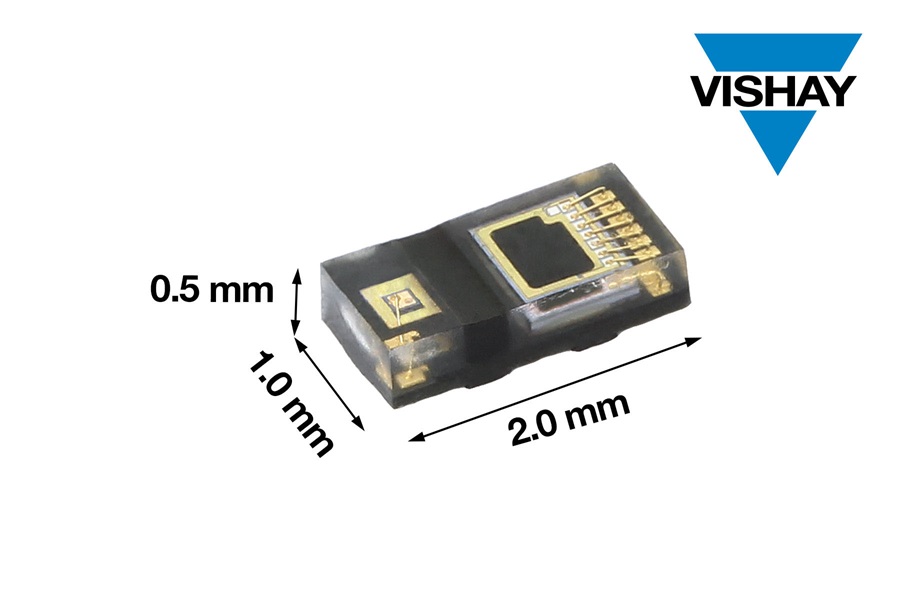Featuring a VCSEL and Smart Dual I²C Slave Address, Device Is Ideal for Battery-Powered Consumer Applications, Including TWS Earphones and VR / AR Headsets
The Optoelectronics group of Vishay Intertechnology has introduced a new fully integrated proximity sensor designed to increase efficiency and performance in consumer applications. Featuring a vertical-cavity surface-emitting laser (VCSEL), the Vishay Semiconductors VCNL36828P combines a photodiode, application-specific integrated circuit (ASIC), 16-bit ADC, and smart dual I²C slave address in a compact 2.0 mm by 1.0 mm by 0.5 mm surface-mount package.
Compared to previous-generation solutions, the proximity sensor released today offers a 20 % smaller package, 20 % lower idle current of 5 μA, and 40 % higher sunlight cancellation up to 140 klx. With a range of 200 mm and a typical rated supply voltage of 1.8 V, the device is designed to deliver superior proximity detection while reducing power consumption to increase efficiency in space-constrained, battery-powered applications.
The proximity sensor will be used in smartphones and smart watches for automatic screen wake-up and turn-off functions, in addition to detecting if users are wearing or not wearing true wireless stereo (TWS) earphones, virtual reality / augmented reality (VR / AR) headsets, and smart glasses. To lower costs in these applications, the VCNL36828P’s smart dual I²C slave address allows for the connection of two proximity sensors without the need for a multiplexer.
The device offers a programmable interrupt function that allows designers to specify high and low thresholds to reduce continuous communication with the microcontroller. The VCNL36828P uses intelligent cancellation to reduce cross-talk, while a smart persistence scheme ensures accurate sensing and a faster response time. The VCSEL wavelength peaks at 940 nm and has no visible “red-tail.” The sensor is RoHS-compliant, halogen-free, and Vishay Green.
Device Specification Table:
| Part number |
VCNL36828P |
| Function |
PS + VCSEL |
| Package size (mm) |
2.0 x 1.0 x 0.5 |
| Supply voltage (V) |
1.65 to 2.0 |
| I²C bus voltage (V) |
1.2 to 3.6 |
| Max. VCSEL driving current (mA) |
20 |
| Operating range (mm) |
200 |
| Supply current, idle state (μA) |
5 |
| Proximity resolution |
16 bits |






